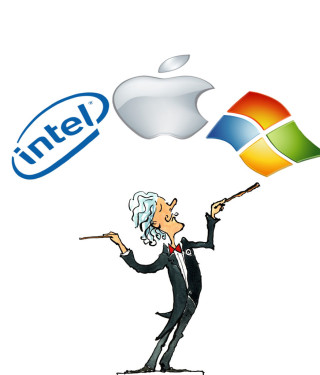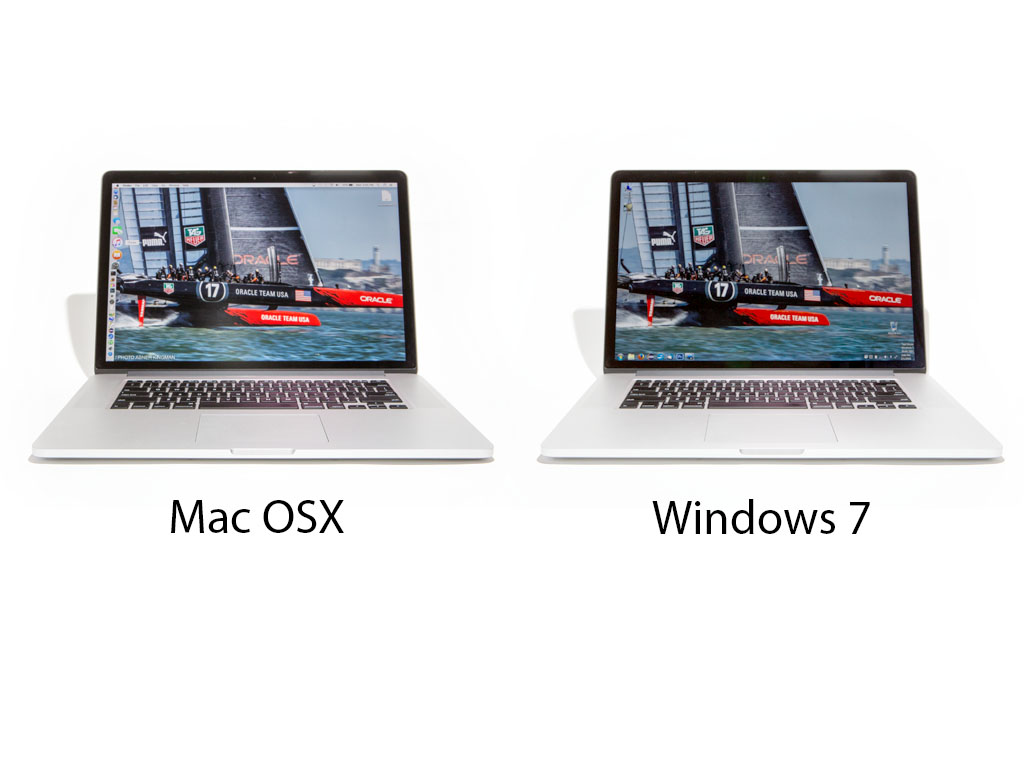Over the years we sailors have seen the computer quietly insinuate itself into our boat life. Personally I think it will get even more invasive — off the shelf electronics are less expensive, better connectivity and more advanced software, and better support. Marine instrument manufacturers are even starting to open up their infrastructure to include open protocols like Ethernet and WiFi. Once there’s an economical NMEA 2000 to PC solution, the PC will bolster it’s position as a non-optional center piece to our boat’s electronics..
With all that said when it came time for me to pick and configure a laptop for my boat I had to make some difficult decisions on what to choose: Windows vs. OSX, Apple vs. Dell/HP/Lenovo/Toshiba/etc.
Considering my computer will be working in the less than forgiving marine environment, I decided physical durability was the first thing to look at. Being an ex-employee of a major PC manufacturer I originally thought I’d just go with my alma mater, but their specs didn’t hold up, neither did their competitors.
I ended up splurging and buying a used 15” MacBook Pro Retina system (I do mean splurge, I was shocked at how well Apple products keep their value). The case is made of a single piece of milled billet aluminum and Apple care is second to none. All the other manufacturers were just plastic with small amounts of strategic cost affective metal reinforcement where needed, billet aluminum that’s the ticket.
On a side note here, even though the MacBook was exceedingly more expensive than a PC laptop, to the point I could have bought two PC laptops, and had a backup, I still went with the Apple because I didn’t want to worry about durability. I already have boat that demands my attention I didn’t want to add a finicky computer to my burdens.
This brought me to the next big decision, Windows or OSX (Yes you can install windows on an Intel based Mac). The big elephant in the room at the moment is the fact that most marine instrument manufacturers do not offer Apple OSX applications for their devices, they’re almost exclusively Windows. (this may change as more consumers are opting for Macs)
Luckily If you have an Apple system you can install Windows on it and turn your Mac into a PC. (You cannot go the other way, Apple’s EULA specifically forbids installing OSX on anything other than an Apple product, Google ‘Hackintosh’ to read about this)
Well hot damn! That sounds like the best of both worlds, one laptop with both Windows and OSX what could possibly go wrong? Well as it turns out, quite a lot – that’s what this post is all about. I’m going to walk you through the trials and tribulations in my efforts to build my boat’s computer.
After some research on installing Windows on a Mac there were three options available:
- OSX with Parallels and Windows (hyper-visor)
- OSX with VMware and Windows, (hyper-visor)
- Dual boot with OSX and Windows. (boot loader)
I probably need to explain these technologies before I go any further.
Parallels and VMware are two applications that are called hyper-visors. In essence Intel CPU’s have a feature that allows special software to virtualize the hardware without the child software knowing it’s not directly running on the hardware. Basically these hyper-visors load first, create simulated computer environments then load OSX and Windows into them. Viola you have OSX and Windows running side-by-side blissfully ignorant of each other, tricky huh?
There is one con to this type of configuration, performance and resources. In order for this to work the hyper-visor has to manage the systems resources (e.g. memory, CPU time, I/O priorities, etc) this is called overhead and it degrades the system performance slightly.
Boot loaders take a completely different approach, they load first just like the hyper-visor then give you the option of which operating system to load. Once the decision has been made the boot loader hands off boot control to the select operating system and bows out never to be heard from again until the next boot cycle.
So which way should I go, hyper-visor or boot loader? They both have their pros and their cons, it all comes down to how you use your system and what you want from it.
For me, my computer life is evenly divided between Microsoft and Apple. I have an iPhone and an iPad and for the most part my personal widgets: contacts, calendar, reminders, and music are all tied to Apple. On the other hand all my marine electronics talk Windows exclusively and most of my programming work is done in a Windows environment.
Below I created a table of what I thought were the most important features and looked at who supported the features best. The solution that best supported said feature got an ‘X’ in it’s column.
| Hyper-Visors | Boot Loaders | |
| Concurrency | X | |
| File Sharing | X* | |
| Performance | X | |
| Reliability/Complexity | X |
* = You can purchase 3rd party applications to enable file sharing in a boot loader configuration.
With all that in mind I decided I would risk it and go the Hyper-visor route using Parallels. After the install the honeymoon phase faded rather quickly. I ran into problems with some applications not seeing their hardware. The desktop started getting cluttered with both OSX and Windows fud, and lastly things started misbehaving when Parallels didn’t always get it right as to who owns certain files. I was also losing some performance to the hyper-visor overhead, It just became too much, I choose poorly.
When it got to the point that I dreaded turning on laptop in fear of what today’s problem would be, I decided to scrap the hyper-visor solution and go with the boot loader. Yea I would lose the ability to easily share files and data between OSX and Windows. Anything had to be better than the dread I was feeling when I turned on my system.
Here we go again, a new Windows installation. Apple supplies bootcamp with OSX so I started it up and followed the instructions: partitioned the hard drive, created the USB boot device, plugged in a DVD ROM drive for the Windows disk and started the install.
Everything was going along as planned until ”BAM!” blue screen of death! WTF!!!! (There are two things in this world that make me cuss like a sailor; boats and computers!)
It seems Apple forgot to digitally sign their SSD driver and Windows just threw a hissy-fit about it. The internet provided the solution of deleting the appleSSD.sys driver from the USB key and retry the installation. Sure enough 30 minutes later I was staring at a Windows login prompt.
My next hurdle was the system kept booting directly to Windows – I was expecting a menu to select my boot option. How was I supposed to get to OSX and all my Apple stuff? Back to the internet, AHA! You have to hold down the alt/option key during booting to get the boot menu. Once again not a deal breaker but it would have been nice if I was told this before hand, if anything to avoid the panic over possibly losing all my OSX data. Also not well documented is if you hold down the ctrl/command key when you select your boot drive it will set that drive to the default drive when there’s no user interaction. I have mine set to boot into OSX by default and I have to use the alt key to boot into Windows.
It worked!! I was excited. However I noticed something was amiss at the Circle-K. No network connection nor could I access the USB key or the CD ROM drive and the track pad was not working.
A little sleuthing brought me to Windows Device Manager, a dozen devices did not have the appropriate drivers. Luckily the USB drive Bootcamp created had most of the drivers. However since Windows couldn’t see the USB drive I was in a bit a of pickle.
How do I get the drivers to a place Windows can access them, chicken and the egg kind of situation. The solution came in the form of a third party OSX application that allows OSX to read and write Windows drives. Basically by booting into OSX I could copy the drivers to the Windows drive. Rebooted the system into windows and install the drivers. Phew that was a close one!
One by one I manually installed the missing drivers and things started to come to life: the trackpad, USB devices, power management, network connections. Bootcamp had not installed everything as was advertised a little irksome to be sure but not a deal breaker since it was a one time hiccup.
It took some effort, a lot of cussing, and more than a few beers to get my system completely working, but it was worth it. I’m very happy with the configuration, the ability to use both OSX and Windows is very handy for how I use my computer. Next up will be provisioning my system with all the programs I need. I’ll save that adventure for another post.
Cheers,
Island Rambler












Now that you have the dual Windows and OS X boot, it is time to drop in a version of linux. I really do like Navigatirx which is a linux build just for navigation. I used to just keep it on a thumb drive, but it takes up so little space, I figure It deserves are partition on a laptop around the boat.
Wow….very interesting, I had never heard of Navigatrix before, their web page look seriously interesting. I think I’m going to have to build me a USB drive to check it out.
Thanks a ton of the heads up!!